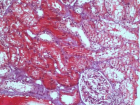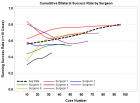Abstract
Research Article
Prevalence of ESBL urinary tract infection in children
Khalil Salameh*, Galia ZA Awean, Hala Elmohamed, Hoor Alshmayt and Mohamed Riad Bur Omer
Published: 08 August, 2019 | Volume 2 - Issue 1 | Pages: 004-007
Urinary tract infection (UTI) is one of the extremely popular causes of febrile illness in children, demanding antimicrobial therapy [1]. Overall, 8% of females and 2% of males, experience at least one incident of UTI by seven years of age, and recurrence takes place in up to 30% during a year [2].
Read Full Article HTML DOI: 10.29328/journal.japch.1001004 Cite this Article Read Full Article PDF
References
- Zorc JJ, Kiddoo DA, Shaw KN. Diagnosis and management of pediatric urinary tract infections. Clin Microbiol Rev. 2005; 18: 417–422. PubMed: https://www.ncbi.nlm.nih.gov/pubmed/15831830
- Desai DJ, Gilbert B, McBride CA. Pediatric urinary tract infections: Diagnosis and treatment. Aust Fam Physician. 2016; 45: 558–563.
- Hanna-Wakim RH, Ghanem ST, El Helou MW, Khafaja SA, Shaker RA, et al. Epidemiology and characteristics of urinary tract infections in children and adolescents. Front Cell Infect Microbiol. 2015; 5: 45. PubMed: https://www.ncbi.nlm.nih.gov/pubmed/26075187
- Cantón R, Valverde A, Novais A, Baquero F, Coque T. Evolution and current situation of ESBL. Enferm Infecc Microbiol Clin. 2007; 25: 2–10.
- Bonnet R. Growing group of extended spectrum β-lactamases: the CTX-M enzymes. Antimicrob Agents Chemother. 2004; 48: 1-14.
- Falagas ME, Karageorgopoulos DE. Extended spectrum β-lactamase-producing organisms. J Hosp Infect. 2009; 73: 345-354. PubMed: https://www.ncbi.nlm.nih.gov/pubmed/19596491
- Reinert RR, Low DE, Rossi F, Zhang X, Wattal C, et al. Antimicrobial susceptibility among organisms from the Asia/ Pacific Rim, Europe and Latin and North America collected as part of TEST and the in vitro activity of tigecycline. J Antimicrob Chemother. 2007; 60: 1018-1029. PubMed: https://www.ncbi.nlm.nih.gov/pubmed/17855724
- García-Hernández AM, García-Vázquez E, Hernández-Torres A, Ruiz J, Yagüe G, et al. Bacteraemia due to Escherichia coli producing extended-spectrum beta-lactamases (ESBL): clinical relevance and today's insights]. Rev Esp Quimioter. 2011; 24: 57–66. PubMed: https://www.ncbi.nlm.nih.gov/pubmed/21666996
- Schwaber MJ, Carmeli Y. Mortality and delay in effective therapy associated with extended-spectrum beta-lactamase production in Enterobacteriaceae bacteremia: a systematic review and meta-analysis. J Antimicrob Chemother. 2007; 60: 913–920. PubMed: https://www.ncbi.nlm.nih.gov/pubmed/17848376
- Holmberg SD, Solomon SL, Blake PA. Health and economic impacts of antimicrobial resistance. Rev Infect Dis. 1987; 9: 1065-1078. PubMed: https://www.ncbi.nlm.nih.gov/pubmed/3321356
- Colodner R, Rock W, Chazan B, Keller N, Guy N, et al. Risk factors for the development of extended-spectrum betalactamase- producing bacteria in nonhospitalized patients. Eur J Clin Microbiol Infect Dis. 2004; 23: 163–167. PubMed: https://www.ncbi.nlm.nih.gov/pubmed/14986159
- Performance standards for antimicrobial susceptibility testing; Nineteenth Informational Supplement. CLSI document M100-S19. Wayne, PA: Clinical and Laboratory Standards Institute. 2009.
- Shettigar SCG, Roche R, Nayak N, Anitha KB, Soans S. Bacteriological profile, antibiotic sensitivity pattern, and detection of extended-spectrum β-lactamase in the isolates of urinary tract infection from children. J Child Health. 2016; 3: 5.
- Pourakbari B, Ferdosian F, Mahmoudi S, Teymuri M, Sabouni F, et al. Increase resistant rates and ESBL production between E. coli isolates causing urinary tract infection in young patients from Iran. Braz J Microbiol. 2012; 43: 766–769. PubMed: https://www.ncbi.nlm.nih.gov/pubmed/24031888
- Rezai MS, Salehifar E, Rafiei A, Langaee T, Rafati M, et al. Characterization of Multidrug Resistant Extended-Spectrum Beta-Lactamase-Producing Escherichia coli among Uropathogens of Pediatrics in North of Iran. Biomed Res Int. 2015; 2015: 309478. PubMed: https://www.ncbi.nlm.nih.gov/pubmed/26064896
- Moore CE, Sona S, Poda S, Putchhat H, Kumar V, et al. Antimicrobial susceptibility of uropathogens isolated from Cambodian children. Paediatr Int Child Health. 2016: 36: 113-117. PubMed: https://www.ncbi.nlm.nih.gov/pubmed/25704569
- Kizilca O, Siraneci R, Yilmaz A, Hatipoglu N, Ozturk E, et al. Risk factors for community-acquired urinary tract infection caused by ESBL-producing bacteria in children. Pediatr Int. 2012; 54: 858–862. PubMed: https://www.ncbi.nlm.nih.gov/pubmed/22882781
- López-Cerero L, Pascual A. Epidemiology of ESBL in the community. An increasing problem. Enferm Infecc Microbiol Clin. 2007; 25: 23–28.
- Hawser SP, Bouchillon SK, Lascols C, Hackel M, Hoban DJ, et al. Susceptibility of European ESCHERICHIA COLI clinical isolates from intra-abdominal infections, extended-spectrum betalactamase occurrence, resistance distribution, and molecular characterization of ertapenem-resistant isolates (SMART 2008–2009). Clin Microbiol Infect. 2012; 18: 253–259.
- Rodríguez-Banño J, Navarro MD, Romero L, Martínez-Martínez L, Muniain MA, et al. Epidemiology and clinical features of infections caused by extended-spectrum beta-lactamase-producing ESCHERICHIA COLI in nonhospitalized patients. J Clin Microbiol. 2004; 42: 1089–1094. PubMed: https://www.ncbi.nlm.nih.gov/pubmed/15004058
- Pediatric Urinary Tract Infection Organism-Specific Therapy. Updated: 2015.
Figures:

Figure 1
Similar Articles
-
Congenital poisoning after maternal parenteral mercury administrationBenjamin Courchia*,Leventer Roberts Maya,Meyer John,Galvez Maida,Herrera Jaime,Rauch Daniel. Congenital poisoning after maternal parenteral mercury administration. . 2018 doi: 10.29328/journal.japch.1001001; 1: 001-005
-
The Impact of Adenotonsillectomy on Health-Related Quality of Life in Paediatric PatientsShuaib Kayode Aremu*. The Impact of Adenotonsillectomy on Health-Related Quality of Life in Paediatric Patients. . 2018 doi: 10.29328/journal.japch.1001002; 1: 006-011
-
Severe Infantile Transaldolase deficiency: A case reportKhaled Alqoaer*,Ziad Asaad,Maisa Halabi. Severe Infantile Transaldolase deficiency: A case report. . 2019 doi: 10.29328/journal.japch.1001003; 2: 001-003
-
Prevalence of ESBL urinary tract infection in childrenKhalil Salameh*,Galia ZA Awean,Hala Elmohamed,Hoor Alshmayt,Mohamed Riad Bur Omer . Prevalence of ESBL urinary tract infection in children. . 2019 doi: 10.29328/journal.japch.1001004; 2: 004-007
-
Does it matter what a mother consumes? An anthropological exploration of dietary practices among Churachandpur (Manipur) pregnant women and its impact on infant birth weightJS Sehrawat*,Evelyn Ngaithianven,Reetinder Kaur. Does it matter what a mother consumes? An anthropological exploration of dietary practices among Churachandpur (Manipur) pregnant women and its impact on infant birth weight. . 2019 doi: 10.29328/journal.japch.1001005; 2: 008-014
-
Glycemic status and its effect in Neonatal Sepsis - A prospective study in a Tertiary Care Hospital in NepalBadri Kumar Gupta*,Binod Kumar Gupta,Amit Kumar Shrivastava,Pradeep Chetri. Glycemic status and its effect in Neonatal Sepsis - A prospective study in a Tertiary Care Hospital in Nepal. . 2019 doi: 10.29328/journal.japch.1001006; 2: 015-019
-
Branchio Oculo Facial SyndromeMaha Oudrhiri*,Toualouth L,Houda Oubejja,Fouad Ettayebi,Hicham Zerhouni. Branchio Oculo Facial Syndrome. . 2019 doi: 10.29328/journal.japch.1001007; 2: 020-020
-
Current childhood cancer survivor long-term follow-up practices in South AfricaAnel van Zyl*,Mariana Kruger,Paul C Rogers. Current childhood cancer survivor long-term follow-up practices in South Africa. . 2020 doi: 10.29328/journal.japch.1001008; 3: 001-007
-
Aripiprazole-induced seizures in children with autism spectrum disorder and epilepsyMohammed MS Jan*. Aripiprazole-induced seizures in children with autism spectrum disorder and epilepsy. . 2020 doi: 10.29328/journal.japch.1001009; 3: 008-010
-
Case-based education to improve learning and faculty teaching of residents and students in a clinical settingDiane E Lorant*,Elizabeth A Wetzel. Case-based education to improve learning and faculty teaching of residents and students in a clinical setting. . 2020 doi: 10.29328/journal.japch.1001010; 3: 011-015
Recently Viewed
-
A study of coagulation profile in patients with cancer in a tertiary care hospitalGaurav Khichariya,Manjula K*,Subhashish Das,Kalyani R. A study of coagulation profile in patients with cancer in a tertiary care hospital. J Hematol Clin Res. 2021: doi: 10.29328/journal.jhcr.1001015; 5: 001-003
-
Viral meningitis in pregnancy: A case reportRuth Roseingrave*,Savita Lalchandani . Viral meningitis in pregnancy: A case report. Clin J Obstet Gynecol. 2020: doi: 10.29328/journal.cjog.1001063; 3: 121-122
-
Vaginal and endometrial metastasis of primary cutaneous malignant melanomaMaria Boia Martins*,Francisca Morgado,Nuno Oliveira,Filomena Ramos. Vaginal and endometrial metastasis of primary cutaneous malignant melanoma. Clin J Obstet Gynecol. 2020: doi: 10.29328/journal.cjog.1001062; 3: 120-120
-
Universal testing for severe acute respiratory syndrome coronavirus 2 upon admission to three labor and delivery units in Santa Clara County, CASophia Yang,Rishi Bhatnagar,James Byrne,Andrea Jelks*. Universal testing for severe acute respiratory syndrome coronavirus 2 upon admission to three labor and delivery units in Santa Clara County, CA. Clin J Obstet Gynecol. 2020: doi: 10.29328/journal.cjog.1001060; 3: 109-113
-
Pregnancy complicated with deficiency of antithrombin: Review of current literatureMiroslava Gojnic,Zoran Vilendecic,Stefan Dugalic,Igor Pantic,Jovana Todorovic,Milan Perovic,Mirjana Kovac,Irena Djunic,Predrag Miljic,Jelena Dotlic*. Pregnancy complicated with deficiency of antithrombin: Review of current literature. Clin J Obstet Gynecol. 2020: doi: 10.29328/journal.cjog.1001059; 3: 103-108
Most Viewed
-
Evaluation of Biostimulants Based on Recovered Protein Hydrolysates from Animal By-products as Plant Growth EnhancersH Pérez-Aguilar*, M Lacruz-Asaro, F Arán-Ais. Evaluation of Biostimulants Based on Recovered Protein Hydrolysates from Animal By-products as Plant Growth Enhancers. J Plant Sci Phytopathol. 2023 doi: 10.29328/journal.jpsp.1001104; 7: 042-047
-
Sinonasal Myxoma Extending into the Orbit in a 4-Year Old: A Case PresentationJulian A Purrinos*, Ramzi Younis. Sinonasal Myxoma Extending into the Orbit in a 4-Year Old: A Case Presentation. Arch Case Rep. 2024 doi: 10.29328/journal.acr.1001099; 8: 075-077
-
Feasibility study of magnetic sensing for detecting single-neuron action potentialsDenis Tonini,Kai Wu,Renata Saha,Jian-Ping Wang*. Feasibility study of magnetic sensing for detecting single-neuron action potentials. Ann Biomed Sci Eng. 2022 doi: 10.29328/journal.abse.1001018; 6: 019-029
-
Pediatric Dysgerminoma: Unveiling a Rare Ovarian TumorFaten Limaiem*, Khalil Saffar, Ahmed Halouani. Pediatric Dysgerminoma: Unveiling a Rare Ovarian Tumor. Arch Case Rep. 2024 doi: 10.29328/journal.acr.1001087; 8: 010-013
-
Physical activity can change the physiological and psychological circumstances during COVID-19 pandemic: A narrative reviewKhashayar Maroufi*. Physical activity can change the physiological and psychological circumstances during COVID-19 pandemic: A narrative review. J Sports Med Ther. 2021 doi: 10.29328/journal.jsmt.1001051; 6: 001-007

HSPI: We're glad you're here. Please click "create a new Query" if you are a new visitor to our website and need further information from us.
If you are already a member of our network and need to keep track of any developments regarding a question you have already submitted, click "take me to my Query."


















































































































































